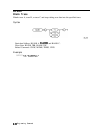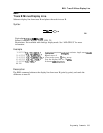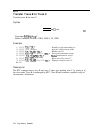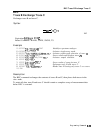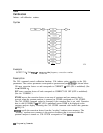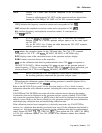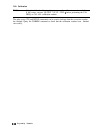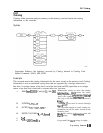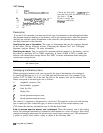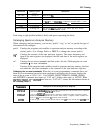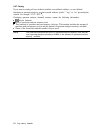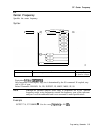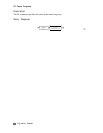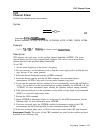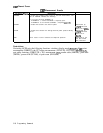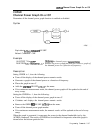
CAT Catalog
70
I=I+l
80
Pas-lf=POS(User$,CHR$(lO))
Checks for line feeds.
CHR$(IO)
repre-
sents the line feed, the ASCII code for a
line feed is “10.
”
90
Catalog$(I)=User$Cl,Pos,lf
-21
Extracts catalog line.
100
OUTPUT
CRT;Catalog$(I)
Displays
catalog line.
120
User$=User$[Pos,lf+l]
130
END WHILE
140
END
Description
To use the CAT command, you must specify the type of information to be cataloged and either
the spectrum analyzer memory or the memory card as the catalog source. After the spectrum
analyzer has sent the catalog information to the controller, the spectrum analyzer sends two
line feed characters to the controller.
Specifying the type of information: The types of information that can be cataloged depend
on the source. See the following sections, “Cataloging the Memory Card” and “Cataloging
Spectrum Analyzer Memory” for more information.
Specifying the source: You can specify the spectrum analyzer memory or the memory card as
the source by specifying INT or CARD, respectively. If source (CARD or INT) is omitted, the
default is the current mass storage device. See “MSI” for more information about setting the
current mass storage device.
Note
When CAT is executed from a remote port, the catalog information is sent to
the remote port.
Cataloging the Memory Card
When cataloging a memory card, you can specify the type of information to be cataloged
by specifying the letter (a, d, 1, i, s, or t) that represents the data type. For example, if you
execute “CAT l*,CARD;” all of the limit line files on the memory card will be returned. The
letters correspond to the data types are as follows:
a*
Amplitude correction files.
d*
Downloadable programs.
1*
Limit line files.
i*
Display files.
S*
Saved spectrum analyzer state.
t*
Saved spectrum analyzer traces,
The asterisk (*) character is interpreted as a wild card. The asterisk can be used with the data
type to catalog all files of that data type, or alone to catalog all files on the memory card.
CAT returns the directory information only if a file has been found.
What is returned when the memory card is cataloged: When the memory card is the catalog
source, the cataloged information is returned to the computer as a series of strings. Each string
contains information about one file that has been saved on the memory card. The information
is placed in specific fields within a string as shown in the following table.
5.90
Programming Commands



